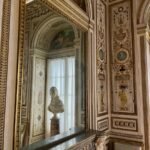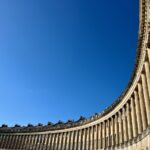
Nearly at the end of these posts! During my two weeks in London researching, I also managed to fit in some sightseeing (it helped that none of my archives were open on Sundays). Mostly this meant the British Museum, but there were also a couple of other favourite haunts plus a museum I’d never managed to make it to before.
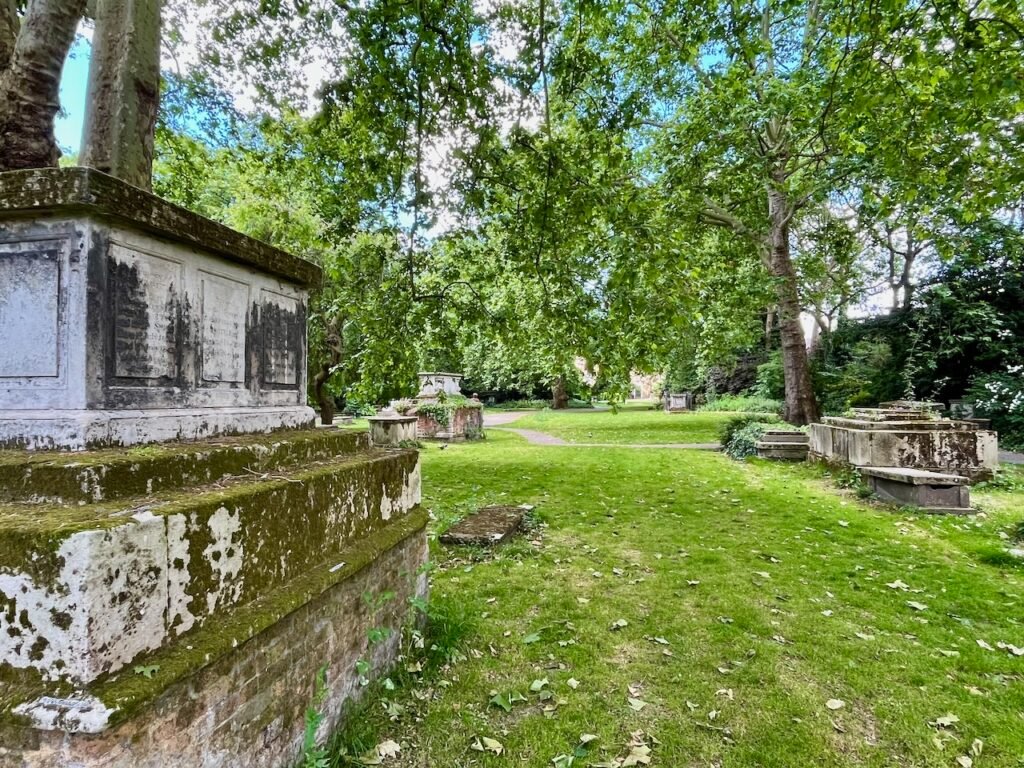
St George’s Gardens, my favourite Bloomsbury spot. Sadly, I didn’t a chance to come back again this trip, but I was glad to see it was still as peaceful as ever.

I just managed to catch the British Museum’s Legion: life in the Roman army exhibition before it closed. Which I really enjoyed, though it was pretty crowded – lots of huddling with strangers peering into darkened display cases, which feels less comfortable now after Covid. Still, there was a lot that was worth persevering for, such as this bronze head of Augustus, formerly part of a statue erected in Egypt early in his reign, but which likely was looted by a Kushite raiding force and brought back to Meroë (in what is now Sudan), which may account for his slightly startled expression. And, at the top of the post, more spoils of war, or rather a sculpture of same, specifically of Dacian or Sarmatian (and Roman) arms and armour, 2nd century AD.
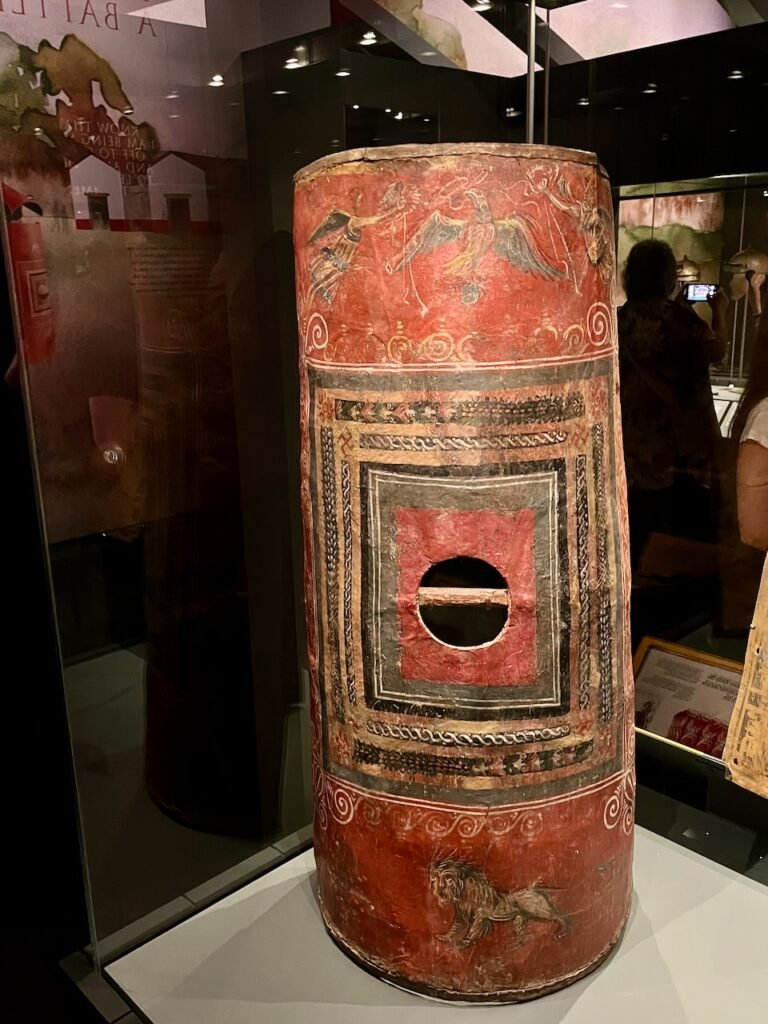
The only complete surviving example of a Roman scutum, found at Dura-Europos (in what is now Syria). The circumstances of its survival are rather dramatic: it was found in what seems to have been a Roman counter-mine to a Sassanid tunnelling operation during the siege of 256–7 AD, when the city fell and ultimately was destroyed.
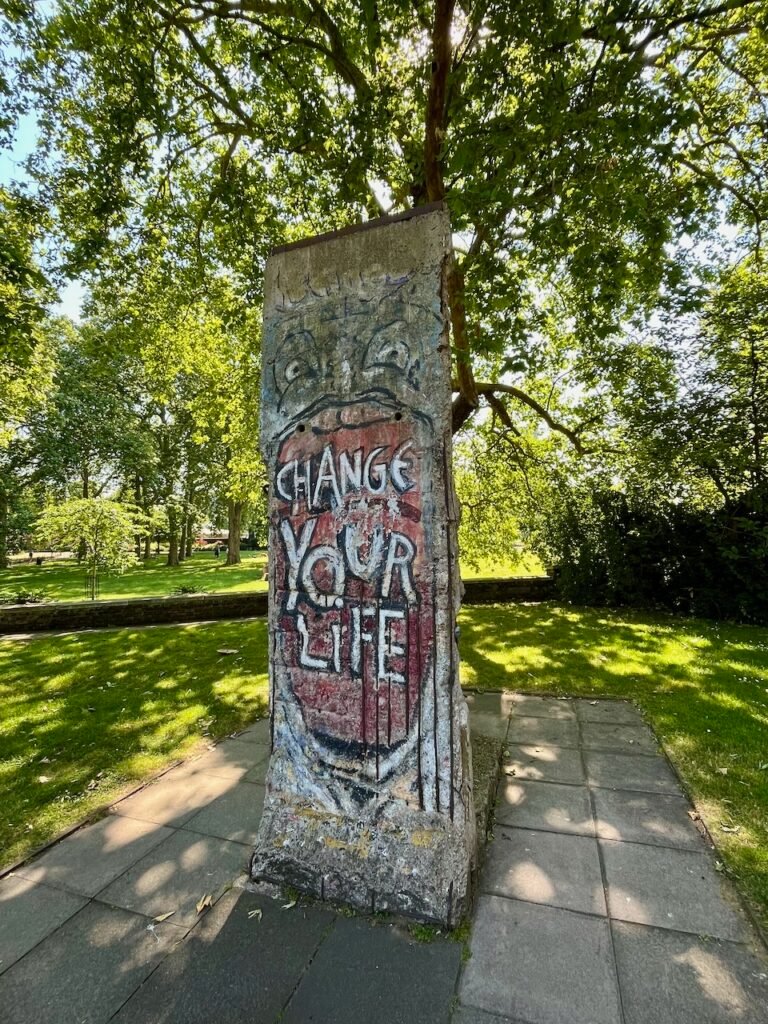
A bit of the Berlin Wall at the Imperial War Museum.
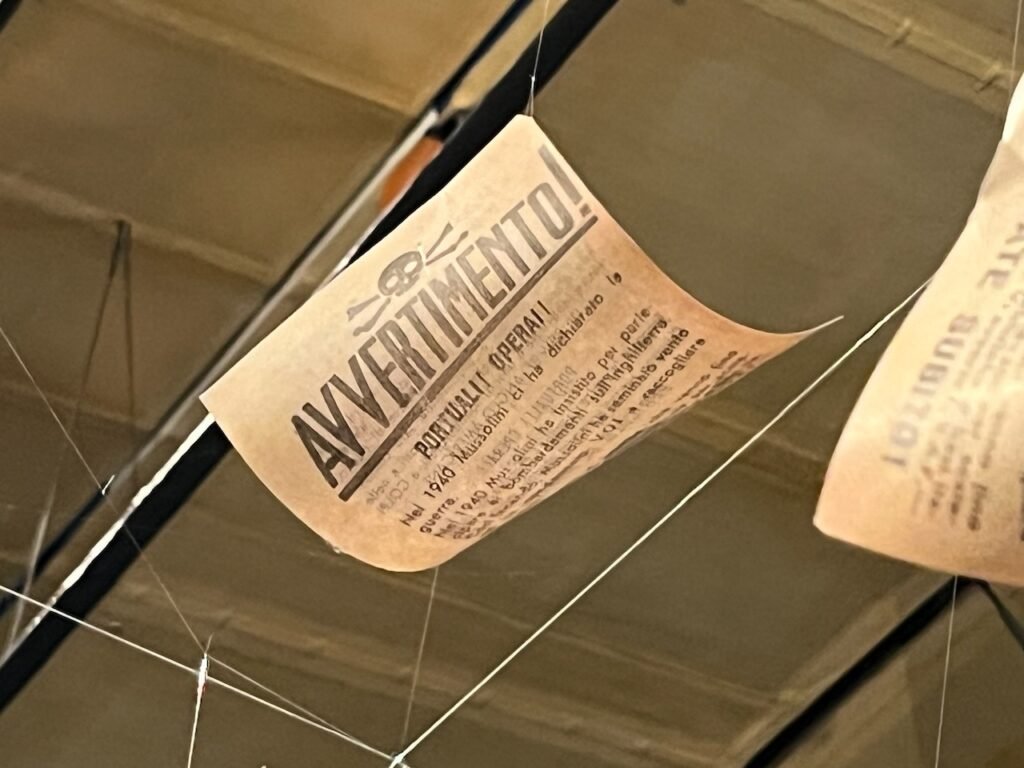
Not an actual artefact but a reproduction (well, I’m pretty sure), of a propaganda leaflet dropped by Bomber Command over Italy, saying something like ‘Warning! Dock workers! In 1940 Mussolini declared war on us’ and going on to suggest evacuation in light of impending air raids. In the RAF Museum, where also the identity of the mysterious person behind Echoes in the Sky was revealed to me – alas, I can say nothing more.
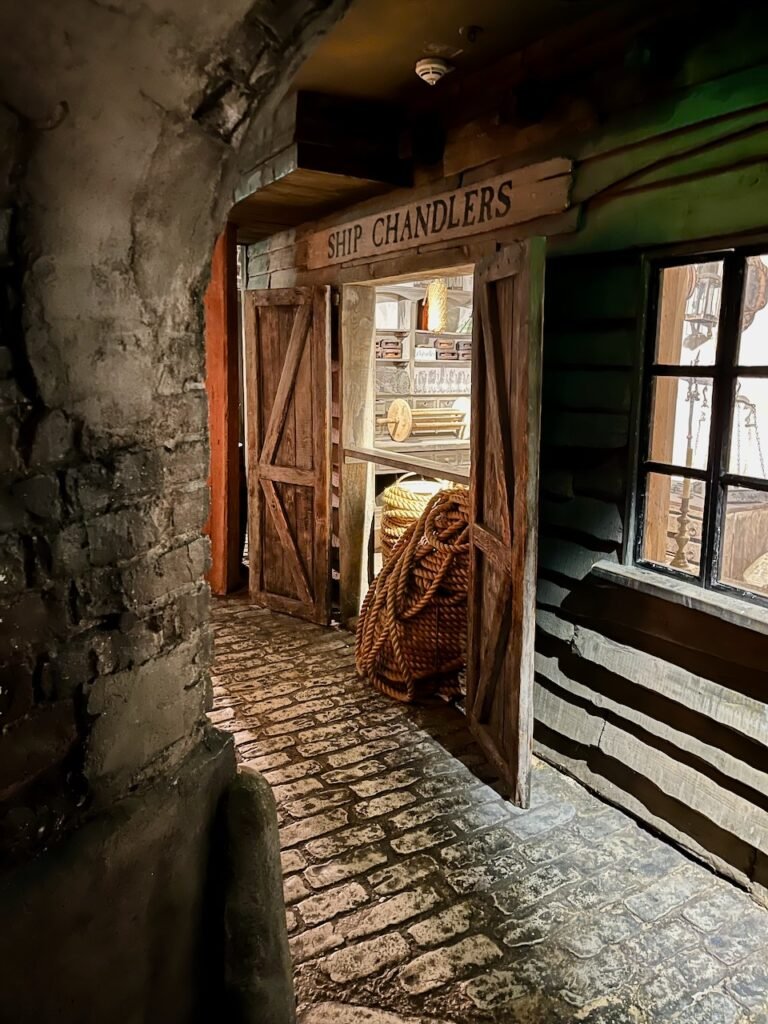
On my last day in London, my flight was in the evening so I stashed my luggage and got in another couple of museum visits. The first was London Museum Docklands. If the regular London Museum (or Museum of London, as was) wasn’t in the middle of a big move I probably would have gone there, as I loved it back in 2007 and haven’t been back since. But I hadn’t been to the Docklands outstation before, so this was a good opportunity. And it’s great! Not sure if it quite counts as a maritime museum, but still lots of nautical and nautical-adjacent stuff along with great social history content (and the best attempt to address the questions of empire, race and slavery that I encountered this trip). Plus, recreated historic streets!

The Docklands museum also had a small but excellent display devoted to the area’s experience of the Zeppelin and Gotha raids, which included this aircraft reporting form. These always fascinate me, as they tell us a lot about what it was expected that people might see. This one is designed to capture police reports of unknown aircraft or ‘suspicious lights or signs in the sky’ to the Admiralty. It seems like it’s for sightings made by police themselves, rather than passing on information from the public. The caption dates it to ‘1915–18’, which, yes, but I’d say no later than early 1916 because by then the Army was responsible for the air defence of Great Britain and so information about enemy aircraft would have been routed through HQ Home Forces.
Here’s the text of the form:
FORM FOR REPORTING AIR-CRAFT, &c.
On seeing or hearing an airship, aeroplane, or any suspicious lights or signs in the sky, try and note the various points given below, then report IMMEDIATELY. Be accurate, and as brief as possible. If you can telephone, ask for “Anti-Aircraft, London.” If no telephone is available, or you are more than 150 miles from London, telegraph to “Anti-Air, West Strand, London.”Always commence your message with the words “Aircraft Report.”
I.—State exactly what was seen or heard
II.—Where seen?
(This should include the nearest large town.)
III.—At what time? (Very important)
IV.—Proceeding in what direction?
V.—Who actually saw it?
VI.—Does anyone corroborate this?
VII.—Was the engine heard?
VIII.—What colour was it?
IX.—Were any particular distinguishing marks noticed?
X.—If Aeroplane—
A.—Monoplane or Biplane?
B.—What type?
C.—Any letters or numbers painted on it?
XI.—If Airship, how many cars underneath?
XII.—Any other information?
XIII.—Name and official capacity of person actually telephoning
XIV.—What Number and Exchange are you telephoning from?For use at Admiralty—
Date_______ Time received ___________ Operator’s Initials _________
This form is intended for Police use, and is issued by the Anti-Aircraft Section, Air Department, Admiralty.

After Docklands, but before Heathrow, it was back to the BM to kill a few hours looking at various amazing objects.
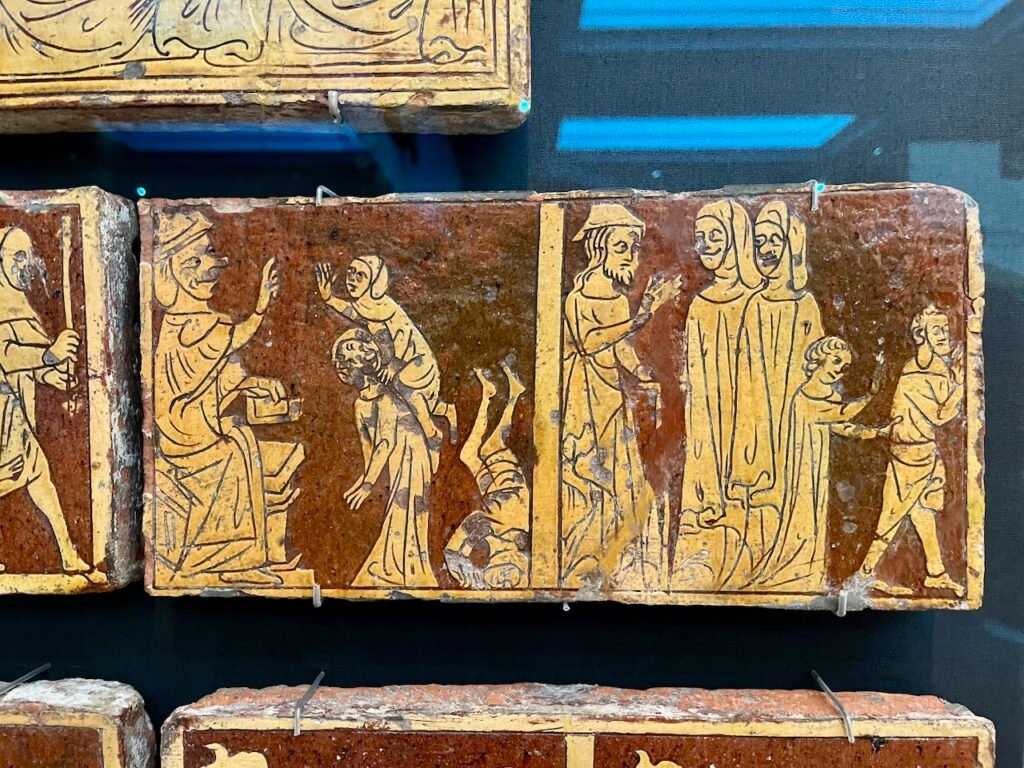
One of the Tring Tiles, made in the 14th century for the church at Tring in Buckinghamshire. They illustrate scenes from the childhood of Jesus, as related in certain apocrypha. On the left-hand side here, one of Jesus’s friends playfully jumps onto his back, and is therefore struck dead for his disrespectful behaviour. On the right, two women complain to Joseph, and so Jesus brings his playmate back to life.
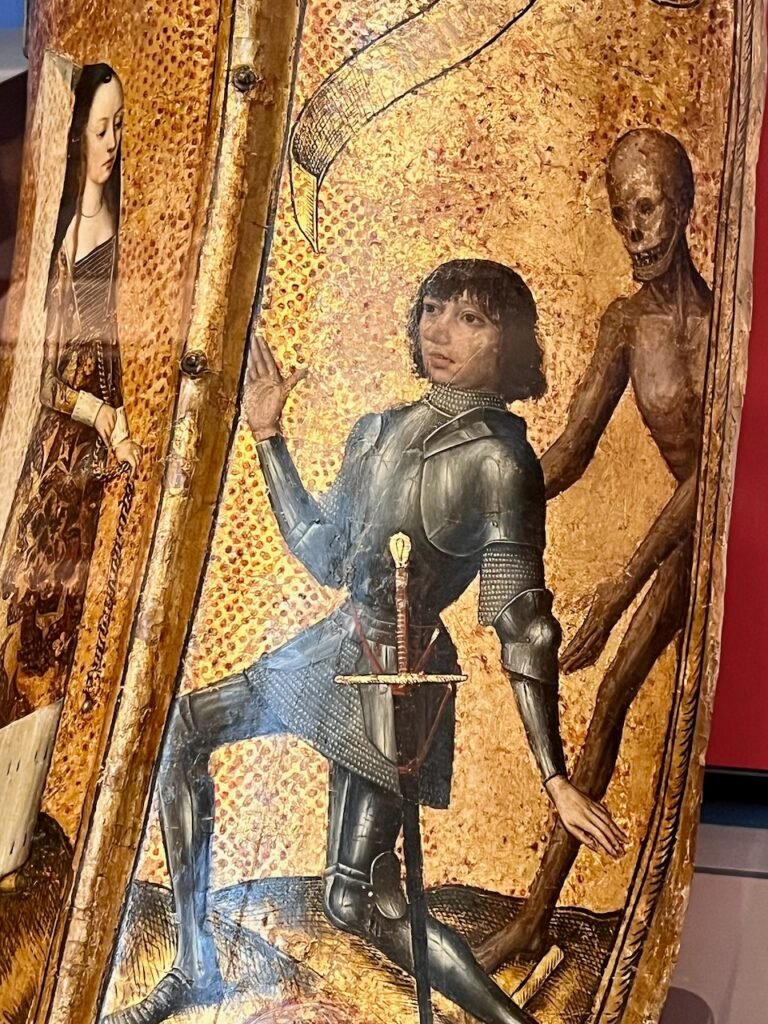
A late 15th-century parade shield, showing a Flemish or Burgundian knight hanging out with his lady friend and Death.
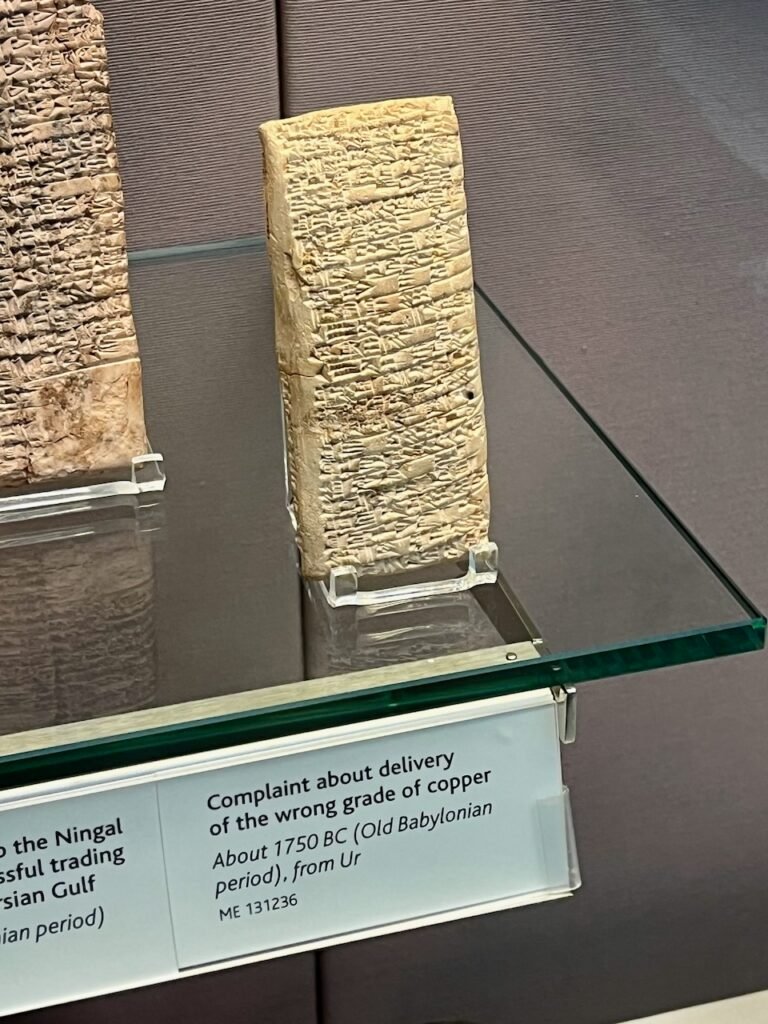
We are not worthy! We are not worthy!

Next (and finally), a surprise destination…
![]() This work is licensed under a Creative Commons Attribution-NonCommercial-NoDerivatives 4.0 International License.
Permissions beyond the scope of this license may be available at http://airminded.org/copyright/.
This work is licensed under a Creative Commons Attribution-NonCommercial-NoDerivatives 4.0 International License.
Permissions beyond the scope of this license may be available at http://airminded.org/copyright/.


